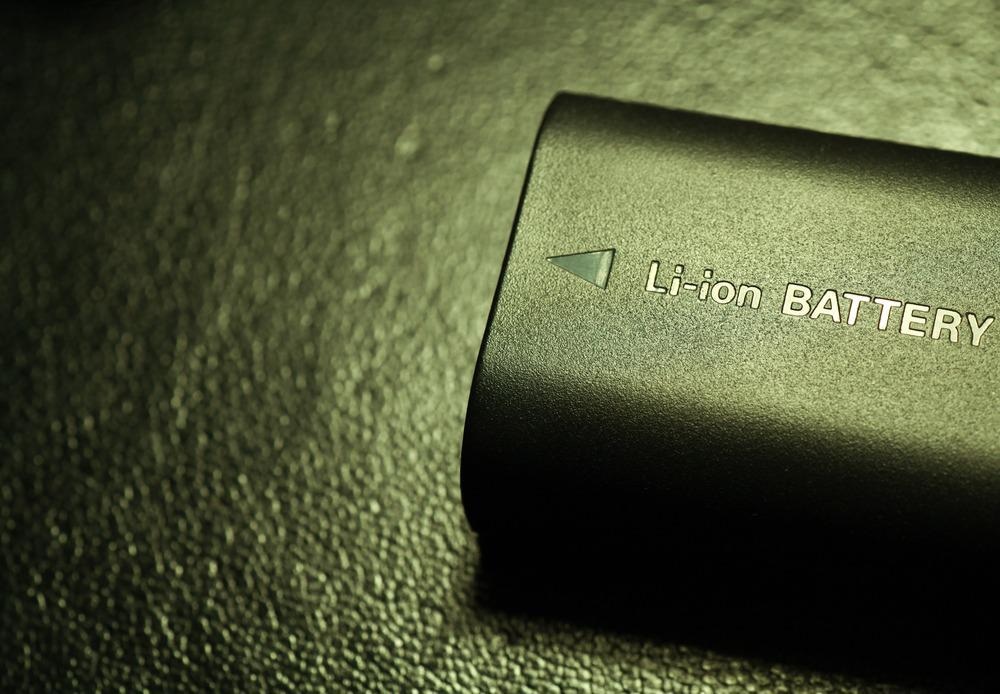Next-generation lithium-ion battery technology developed by Silicon Valley startup Sila Nanotechnologies, has recently made its first appearance on the consumer market. The new Whoop fitness tracker features a Sila battery that represents significant progress in lithium-ion batteries: more energy in a battery cell for less cost.

Image Credit: Zivica Kerkez/Shutterstock.com
Next-Gen Lithium-Ion Batteries Unveiled in Whoop 4.0
The California wearables giant, Whoop, has revealed its latest health and fitness tracker. The Whoop 4.0 device is the first product on the consumer market using the groundbreaking Sila battery technology.
The wearables company is a good partner for Sila Nanotechnologies, having just raised $200 million in capital funding at a $3.6 billion valuation. With 17% higher energy density than battery solutions in previous Whoop products, the Sila battery contributes to an overall form factor reduction of 33%.
As well as enabling the production of a smaller wearable, incorporating the Sila battery has also allowed Whoop to include more features in their latest device. A health monitor, skin temperature sensor, pulse oximeter, and sleep coach with haptic alerts have been added to the Whoop 4.0 without compromising its 5-day minimum battery life.
The inclusion of the Sila battery represents one of the most significant step-changes in battery chemistry to come to the consumer market for a few decades. Sila Nanotechnologies believes that the launch of this small fitness tracker is proof of the success of its work over the last decade.
The company envisions a future where almost all energy requirements are met with electricity. The Whoop launch is just the first step towards this.
Sila Battery Technology
Sila Nanotechnologies’ has spent the last ten years developing new battery technology, with the Sila battery representing the first marketable fruit of this research.
The company’s innovative battery chemistry uses silicon in its cell’s anode instead of graphite, resulting in a battery with up to 20% more energy density than conventional lithium-ion batteries with a smaller battery footprint.
The development of the new battery focused on commercialization from the outset. As a result, Sila Nanotechnologies has produced a system that can be easily and quickly brought to market, integrating into existing manufacturing and design parameters. These benefits are maintained without compromising the battery’s life cycle, charging performance, or safety.
Opportunities for Next-Gen Batteries
Our capacity for energy storage limits the energy revolution we need in order to reach net-zero CO2 emissions. Electrifying nearly all fossil-fuel burning activities and powering grids with renewables and nuclear energy are vital steps we need to take to protect the environment.
Battery technology underpins the electrification of everything.
Demand for more battery storage has already been sharply on the rise. Annual battery demand grew by 30% between 2010 and 2018, to 180 gWh in 2018. Conservative estimates predict the growth rate will slow to 25% but stay there until 2030. At this rate, global demand for battery storage will be 2,600 gWh each year. Estimates that take the reduced cost for batteries into account put the annual demand for battery storage at over 3,500 gWh.
Three factors primarily cause this high growth rate:
- Electrification in transport and mobility
- Large-scale battery deployment in electric grids
- Stringent regulation on emissions
Better and more affordable batteries will also impact demand for electric vehicles in the future, as could as yet unknown changes in government policies. 2,000 gWh will be enough for 100 million electric vehicles on the roads. To replace all motors with electric vehicles, and enable a global renewables-based energy and transport system, 30,000 gWh of battery storage will need to be produced each year.
Technological progress may be expected to advance relative to increased demand for battery storage. Lithium-ion batteries costing just $50 per kWh are due to come onto the market in the next decade. To be commercially viable, a battery like this has to be capable of fast charging over more than 10,000 cycles, lasting more than 30 years, and being made with abundant raw materials.

Image Credit: Janaka Dharmasena/Shutterstock.com
Battery Innovation Will Enter Through Consumer Market First
While new lithium-ion batteries will primarily meet demand from the electrification of transport and mobility in the next few years, entry to the market will likely be through consumer products like the Whoop 4.0. This is because consumer products like wearables have less demanding engineering requirements than automobiles and are produced at smaller scales.
New battery technologies that can be used in both consumer and automotive products are likely to succeed. For this reason, new battery technology has to be scalable from the outset.
Scalability for batteries includes the ability to retrofit products into existing electric systems, obtain raw materials cheaply from anywhere in the world, and start manufacturing products with minimal new factory equipment.
Next Steps for Sila Nanotechnologies
Sila Nanotechnologies will now begin the task of scaling up its manufacturing operations again. After having already scaled from the laboratory to commercial launch with Whoop, the company has a good track record of increasing capacity.
Joint battery ventures with BMW and Daimler to use Sila’s silicon-anode battery technology will bring a Sila battery to the automotive market by 2025.
Improving power density in batteries offers more freedom for designers to make new electric products, creating more electrification of more of our activities into the future and enabling our switch to renewable energy.
References and Further Reading
Aricò, A. S. et al. (2005) Nanostructured Materials for Advanced Energy Conversion and Storage Devices. Nature Materials. Available at: https://doi.org/10.1038%2Fnmat1368
Bellan, R. (2021) Sila Nanotechnologies’ Battery Technology Will Launch in Whoop Wearables. TechCrunch.com. [Online] Available at: https://techcrunch.com/2021/09/08/sila-nanotechnologiess-first-next-gen-battery-will-launch-in-whoop-wearables/
Brudermüller, M., B. Sobotka, and W. Dominic (2019) Insight Report - A Vision for a Sustainable Battery Value Chain in 2030 : Unlocking the Full Potential to Power Sustainable Development and Climate Change Mitigation. World Economic Forum & Global Battery Alliance. [Online] http://www3.weforum.org/docs/WEF_A_Vision_for_a_Sustainable_Battery_Value_Chain_in_2030_Report.pdf
Sila Nano. (2020) Future of Energy Storage [Online] Available at: https://silanano.com/news/futureofenergystorage/
Graetz, J. et al. (2003) Highly Reversible Lithium Storage in Nanostructured Silicon. Electrochemical and Solid-State Letters. Available at: https://doi.org/10.1149%2F1.1596917
Nobel Foundation(2019) The Nobel Prize in Chemistry 2019 [Online] Available at: https://www.nobelprize.org/prizes/chemistry/2019/summary/
Disclaimer: The views expressed here are those of the author expressed in their private capacity and do not necessarily represent the views of AZoM.com Limited T/A AZoNetwork the owner and operator of this website. This disclaimer forms part of the Terms and conditions of use of this website.